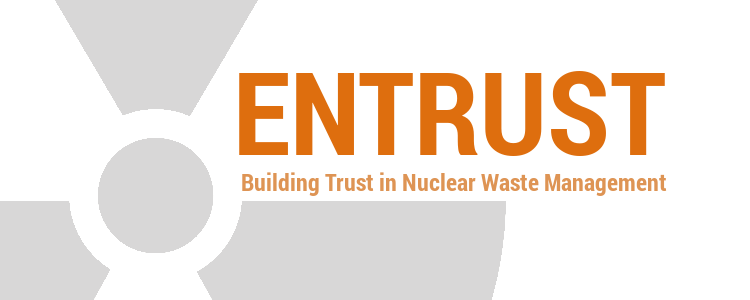Summary and Objectives
The ENTRUST project is coordinated by Amphos 21 Consulting S.L. located in Barcelona, Spain, in collaboration with Stanford University’s Center for International Security and Cooperation (CISAC) in California, USA. It examines the general question of how to manage in the long term the growing stocks of spent nuclear fuel and high-level radioactive waste produced at commercial power plants in a context of uncertain transitions and persisting societal concerns over nuclear energy technologies. The project comprises scientific and training objectives. The main scientific objective is to develop an analytical framework for the holistic assessment of nuclear waste management (NWM) scenarios and policies with the objective of building and maintaining public trust.
Our aims are to:
- Define a theory for the holistic study of nuclear waste management (NWM) systems aimed at building public trust;
- Develop an analytical framework as a methodological body for the participatory quantitative story telling of NWM strategies and policies and test it as part of CISAC’s “Reset of U.S. Nuclear Waste Management Policy” initiative; and
- Complete an integrated analysis of NWM policies in the United States (US) and selected European Union (EU) countries, and subsequently develop a strategy at EU level.
Project information
Funding:
- European Commission’s Marie Sklodowska-Curie Fellowship (H2020-MSCA-IF-GF-2016) (2017–2020)
- Stanford University’s CISAC Nuclear Security Fellowship (2017–2019)
Coordinator: Amphos 21 Consulting S.L., Spain
Partner: Stanford University, California, United States
Start date: 1 August 2017
End date: 31 July 2020
CORDIS webpage: cordis.europa.eu/project/id/739850
Approach
Dealing with the safe long-term NWM has become one of the world’s largest problems as it conveys technical and societal challenges. Main technical challenges reside in the inevitable uncertainties in the models and data used for these analyses of long-term solutions due to the extraordinarily long time scales that must be explicitly considered. Main sources of uncertainties concern the behavior of the waste materials and packages and of the environmental and geologic conditions. Yet, the biggest challenges to NWM are social. Difficulties in achieving public support have been seriously underestimated in the past, and opportunities to increase public involvement and to gain public trust have been missed. Worldwide, nearly one-third of the historical attempts to site geologic repositories for HLW and SNF were prematurely and permanently terminated because of public opposition. For this reason, most countries have made major changes in their approach to waste disposition to address the recognized social challenges.
Team
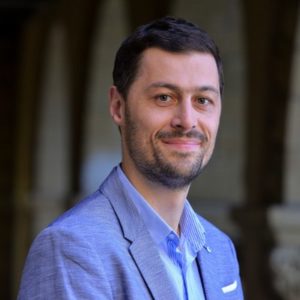
François Diaz-Maurin
European Commission’s Marie Sklodowska-Curie Fellow, Amphos 21 Consulting SL. Affiliate, Center for International Security and Cooperation (CISAC), Stanford University.
François Diaz-Maurin is a scientist and engineer trained in nuclear waste management (Stanford University, 2017–2019), environmental science and technology (Ph.D., Universitat Autònoma de Barcelona, 2013, summa cum laude), and civil engineering (B.Sc./M.Sc., University of Rennes 1, 2004/2007, both with distinction).
Prior to joining academia in February 2011, he worked 4 years as a structural and mechanical engineer on various major R&D projects in the nuclear industry in Paris, France (2007-2008) and in Boston, United States (2009-2010).
François’ research deals with issues related to the radioactive waste materials produced at commercial and military facilities in a context of uncertain energy transitions and persisting social concerns over nuclear energy technologies. It covers the theoretical, methodological and empirical aspects of the back-end of the nuclear fuel cycle integrating knowledge from various disciplines in the science, engineering and social sciences areas.
He is the author or co-author of over 40 scientific publications mainly on multi-scale integrated analysis applied to nuclear energy systems, natural resources management and sustainability assessment.
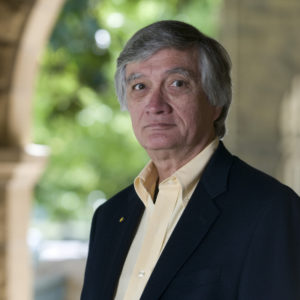
Rodney C. Ewing
Frank Stanton Professor in Nuclear Security and Co-Director of the Center for International Security and Cooperation (CISAC) in the Freeman Spogli Institute for International Studies (FSI).
Rod Ewing is also Professor in the Department of Geological Sciences in the School of Earth, Energy and Environmental Sciences at Stanford University.
He is the author or co-author of over 750 research publications and the editor or co-editor of 18 monographs, proceedings volumes or special issues of journals. He has published widely in mineralogy, geochemistry, materials science, nuclear materials, physics and chemistry in over 100 different ISI journals. He has been granted a patent for the development of a highly durable material for the immobilization of excess weapons plutonium.
Professor Ewing has served on thirteen National Research Council committees and board for the National Academy of Sciences, Engineering and Medicine that have reviewed issues related to nuclear waste and nuclear weapons. In 2012, he was appointed by President Obama to serve as the Chair of the Nuclear Waste Technical Review Board, which is responsible for ongoing and integrated technical review of DOE activities related to transporting, packaging, storing and disposing of spent nuclear fuel and high-level radioactive waste; he stepped down from the Board in 2017.
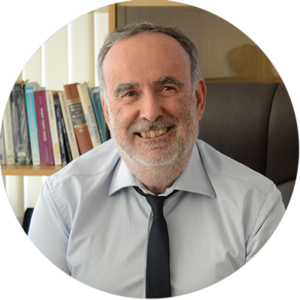
Jordi Bruno
CEO and Chairman of the Board of Amphos 21 Group.
Jordi Bruno is an international expert on Sustainability and Environmental Strategies, including Circular Economy. He has worked for more than 30 years for the safe disposal of radioactive and industrial wastes. Author of more than 130 papers, five books and countless reports.
He has directed several PhD theses and he is member of a number of scientific and strategic councils. Jordi Bruno holds a PhD in Inorganic Chemistry by the Royal Institute of Technology (KTH) in Stockholm (Sweden), an MBA by the Stockholm School of Economics and an Executive MBA for Smaller Technology Companies from Stanford.

Hilary C. Sun
Hilary is a graduate student at Stanford University pursuing a M.S. in Computer Science (Class of 2019). She completed a B.S. in Computer Science also from Stanford University with minors in Statistics and History. In ENTRUST, Hilary contributed as a data scientist and programmer with the support of the VPUE Department and Faculty Grants program from Stanford’s Office of the Vice Provost for Undergraduate Education (2017-2018).
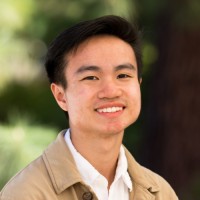
Jerold Yu
Jerold is a graduate student at Stanford University pursuing a M.S. in Statistics (Class of 2020). He completed a B.S. in Mathematical and Computational Science also at Stanford University. In ENTRUST, Jerold contributed as a data scientist and programmer with the support of the VPUE Department and Faculty Grants program from Stanford’s Office of the Vice Provost for Undergraduate Education (2018-2020).
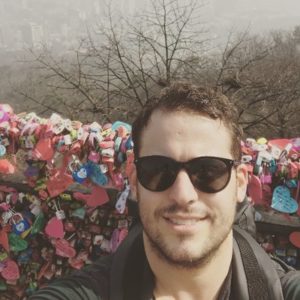
Juan Morganti
Juan is a graduate student at Stanford University pursuing a M.A. in International Policy Studies (Class of 2019). In ENTRUST, Juan contributed as a research assistant working on the political and legal history of the U.S. nuclear waste management program with the support of the MIP Research Assistant Funding Program from Stanford's Freeman Spogli Institute (FSI) for International Studies (2018-2019).
Results
We designed and developed several analytical tools supporting the integrated assessment of NWM strategies: (1) a comprehensive bibliometric analytical tool to study the scholarly and scientific literature about nuclear waste since 1940; (2) a multi-criteria evaluation tool for the comparison of long-term SNF storage options; (3) a calculation and data visualization tool to evaluate possible locations of interim storage and disposal facilities for SNF; and (4) a multi-criteria evaluation tool used to compare different spent fuel management and disposal strategies by comparing the relative performance of sites at the level of their geological environment properties. The approach is part of recent efforts toward the integration of the back-end of the nuclear fuel cycle. The back-end integration accounts for the various processes of NWM—onsite storage, consolidated storage, transport and geological disposal. These processes must be fully coupled so that benefits and impacts can be assessed at the level of the whole fuel cycle and for the different social actors. The tools developed during this project support that aim by allowing the evaluation of NWM systems at any point in the system (storage, transport, disposal). The tools have been initially developed in the context of the U.S. NWM program during the outgoing phase and then were applied to the EU context, especially on clay-based disposal systems.
To support the scientific objectives of the project, the Principal Investigator went through an extensive training program on the technical and scientific basis of NWM. The training program consisted in auditing classes, reviewing the scientific literature, participating to workshops/conferences, and interviewing experts in the many fields relevant to the technical and social aspects of NWM.
Go to:
Publications
In the absence of a federal geologic repository or consolidated, interim storage in the United States, commercial spent fuel will remain stranded at some 75 sites across the country. Currently, these include 18 “orphaned sites” where spent fuel has been left at decommissioned reactor sites. In this context, local communities living close to decommissioned nuclear power plants are increasingly concerned about this legacy of nuclear power production and are seeking alternative strategies to move the spent fuel away from those sites. In this paper, we present a framework and method for the socio-technical multi-criteria evaluation (STMCE) of spent fuel management strategies. The STMCE approach consists of (i) a multi-criteria evaluation that provides an ordinal ranking of alternatives based on a list of criterion measurements; and (ii) a social impact analysis that provides an outranking of options based on the assessment of their impact on concerned social actors. STMCE can handle quantitative, qualitative or both types of information. It can also integrate stochastic uncertainty on criteria measurements and fuzzy uncertainty on assessments of social impacts. We conducted an application of the STMCE method using data from the decommissioned San Onofre Nuclear Generating Station (SONGS) in California. This example intends to facilitate the preparation of stakeholder engagement activities on spent fuel management using the STMCE approach. The STMCE method provides an effective way to compare spent fuel management strategies and support the search for compromise solutions. We conclude by discussing the potential impact that such an approach could have on the management of commercial spent fuel in the United States.
The isolation of radioactive waste in a deep geological repository depends on engineered and geologic barriers. The geologic barriers depend most on low hydraulic conductivity and geochemical constraints that limit solubility and increase sorption. However, there is a difference between selecting sites of similar geologies vs. sites where the geology is different. In the former case, the same geochemical factors can be used to analyze the performance of different sites—as in Sweden and Finland [1]. In other countries, the choice can be among sites with very different geologic settings—as may be the case in the U.S. and Germany. Yet, sites that are in different host rocks will not necessarily rely on the same retardation concepts. The difficulty is that host-rock-specific criteria do not allow the direct comparison of the technical suitability of sites with different geologic settings. We present an approach for the multi-scale, multi-criteria evaluation of sites by focusing on the geohemical factors contributing to retardation. A multi-scale representation of disposal systems allows the comparison of host-rock-specific repository designs at the level of their main components and processes (e.g., geological barriers, geochemical processes); whereas, their technical suitability is determined for a specific set of indicators and criteria [2]. The multi-criteria evaluation seeks to rank all potential sites according to their level of fulfilment of safety functions [3]. This approach does not search for a technically optimal solution because the selected site will necessarily be a combination of technical suitability and social acceptance.
Datasets & codes
- Last update: Dec 27, 2018
- Last update: Oct 30, 2018
Codebase for bibliographic analysis of transuranic (TRU) waste and defense high-level waste (DHLW) based on the OSTI database
- Last update: Apr 25, 2018




The research leading to this website was supported by the European Union’s Horizon 2020 research and innovation program under the Marie Sklodowska-Curie Individual Fellowship program (grant agreement no. 739850) and the MacArthur Foundation under CISAC’s Nuclear Security Fellowship program (2017-2019).
© 2022 François Diaz-Maurin.
